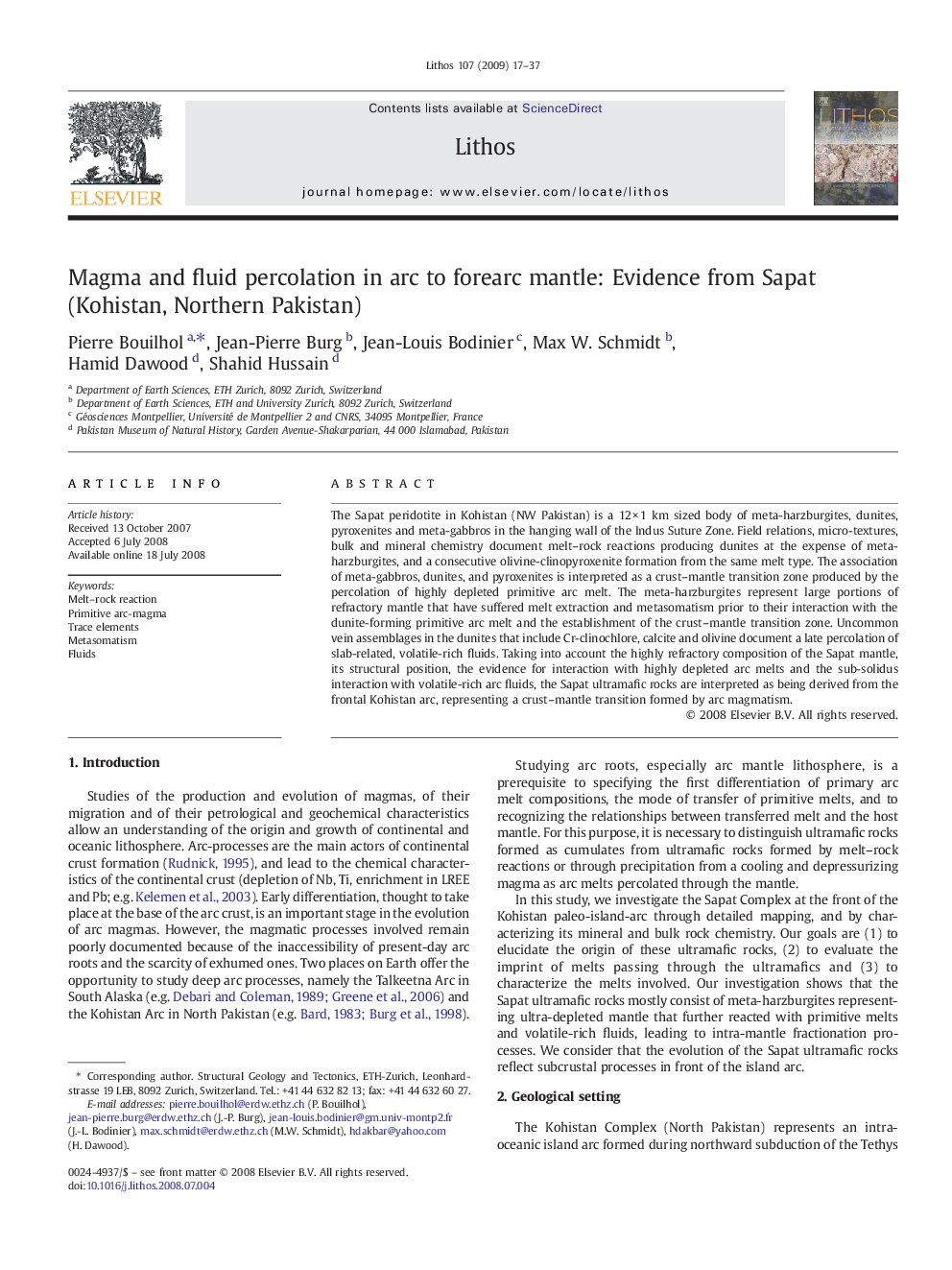| کد مقاله | کد نشریه | سال انتشار | مقاله انگلیسی | نسخه تمام متن |
|---|---|---|---|---|
| 4717477 | 1638749 | 2009 | 21 صفحه PDF | دانلود رایگان |

The Sapat peridotite in Kohistan (NW Pakistan) is a 12 × 1 km sized body of meta-harzburgites, dunites, pyroxenites and meta-gabbros in the hanging wall of the Indus Suture Zone. Field relations, micro-textures, bulk and mineral chemistry document melt–rock reactions producing dunites at the expense of meta-harzburgites, and a consecutive olivine-clinopyroxenite formation from the same melt type. The association of meta-gabbros, dunites, and pyroxenites is interpreted as a crust–mantle transition zone produced by the percolation of highly depleted primitive arc melt. The meta-harzburgites represent large portions of refractory mantle that have suffered melt extraction and metasomatism prior to their interaction with the dunite-forming primitive arc melt and the establishment of the crust–mantle transition zone. Uncommon vein assemblages in the dunites that include Cr-clinochlore, calcite and olivine document a late percolation of slab-related, volatile-rich fluids. Taking into account the highly refractory composition of the Sapat mantle, its structural position, the evidence for interaction with highly depleted arc melts and the sub-solidus interaction with volatile-rich arc fluids, the Sapat ultramafic rocks are interpreted as being derived from the frontal Kohistan arc, representing a crust–mantle transition formed by arc magmatism.
Journal: Lithos - Volume 107, Issues 1–2, January 2009, Pages 17–37